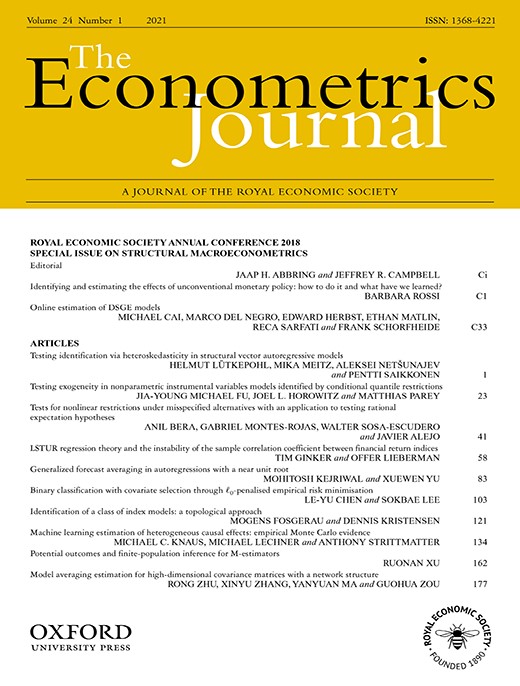-
Views
-
Cite
Cite
Barbara Rossi, Identifying and estimating the effects of unconventional monetary policy: How to do it and what have we learned?, The Econometrics Journal, Volume 24, Issue 1, January 2021, Pages C1–C32, https://doi.org/10.1093/ectj/utaa020
Close - Share Icon Share
Summary
The recent financial crisis led central banks to lower their interest rates in order to stimulate the economy until they hit the zero lower bound. How should one identify monetary policy shocks in unconventional times? Are unconventional monetary policies as effective as conventional ones? And has the monetary policy transmission mechanism changed in the zero lower bound era? This article aims to provide an overview of the econometric challenges of and the solutions to the identification of monetary policy shocks in unconventional times as well as a survey of their empirical effects on the economy.





